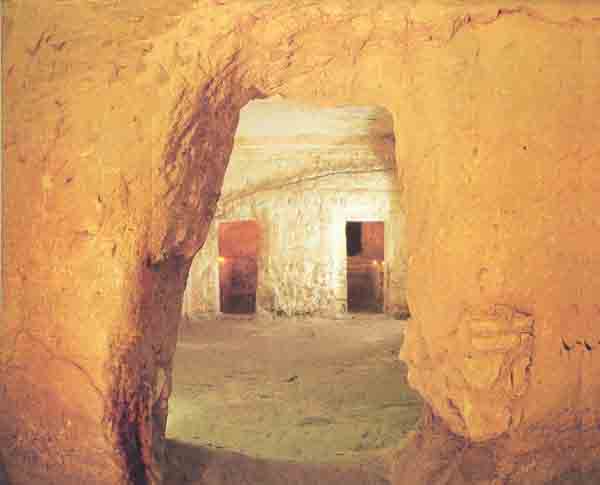Cave Complex One
Sidebar to: Jerusalem Tombs from the Days of the First Temple

Carved 43 feet deep into the bedrock of the grounds of the St. Étienne Monastery, this complex is typical of many First Temple period tomb caves throughout the kingdom of Judah: a central entrance chamber is surrounded by burial chambers; most of the burial chambers (3, 4, 5, 8 on the plan above) have benches lining three of the walls; generally, horseshoe-shaped headrests are positioned on the benches (3, 4, 5, 6); and under each right-hand bench, a hollowed out area for gathered bones extends under the left-hand bench of the next room (3, 4, 5, 6).
Although typical of eighth- to seventh-century B.C. tombs, this complex and Cave Complex 2 as well also have very unusual architectural and decorative features. In both complexes, the first room off the right wall of the entrance chamber is larger than the other chambers and has no burial benches. Here the body may have been prepared for burial, or the family may have gathered to perform a funeral.

Carved into the stone walls of the large entrance rooms of both complexes and some of the burial chambers are door frames, recessed panels and ceiling cornices, evidence that these tomb complexes were hewn by a wealthy or noble family. Some of these features appear in the photo above, framed by the doorway to the entrance chamber of Cave Complex 1.
Already a library member? Log in here.
Institution user? Log in with your IP address.

